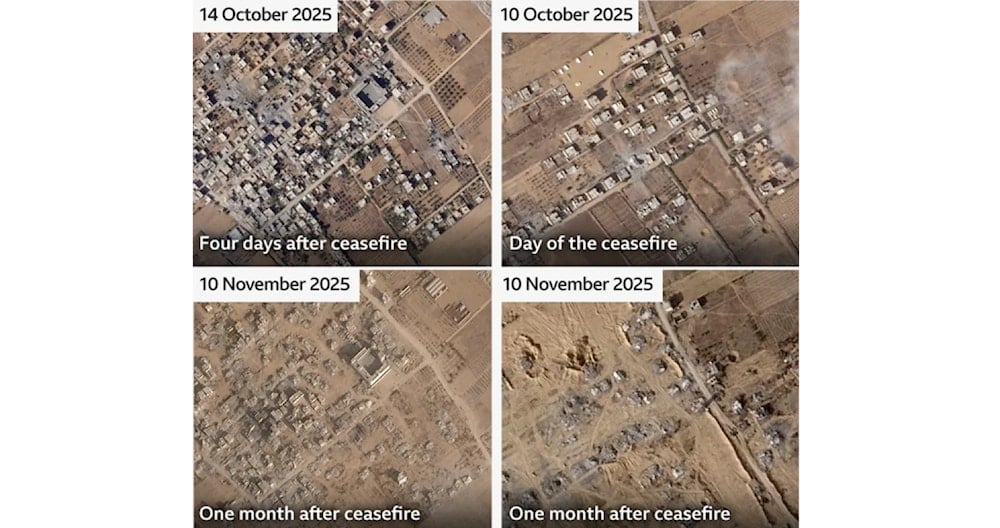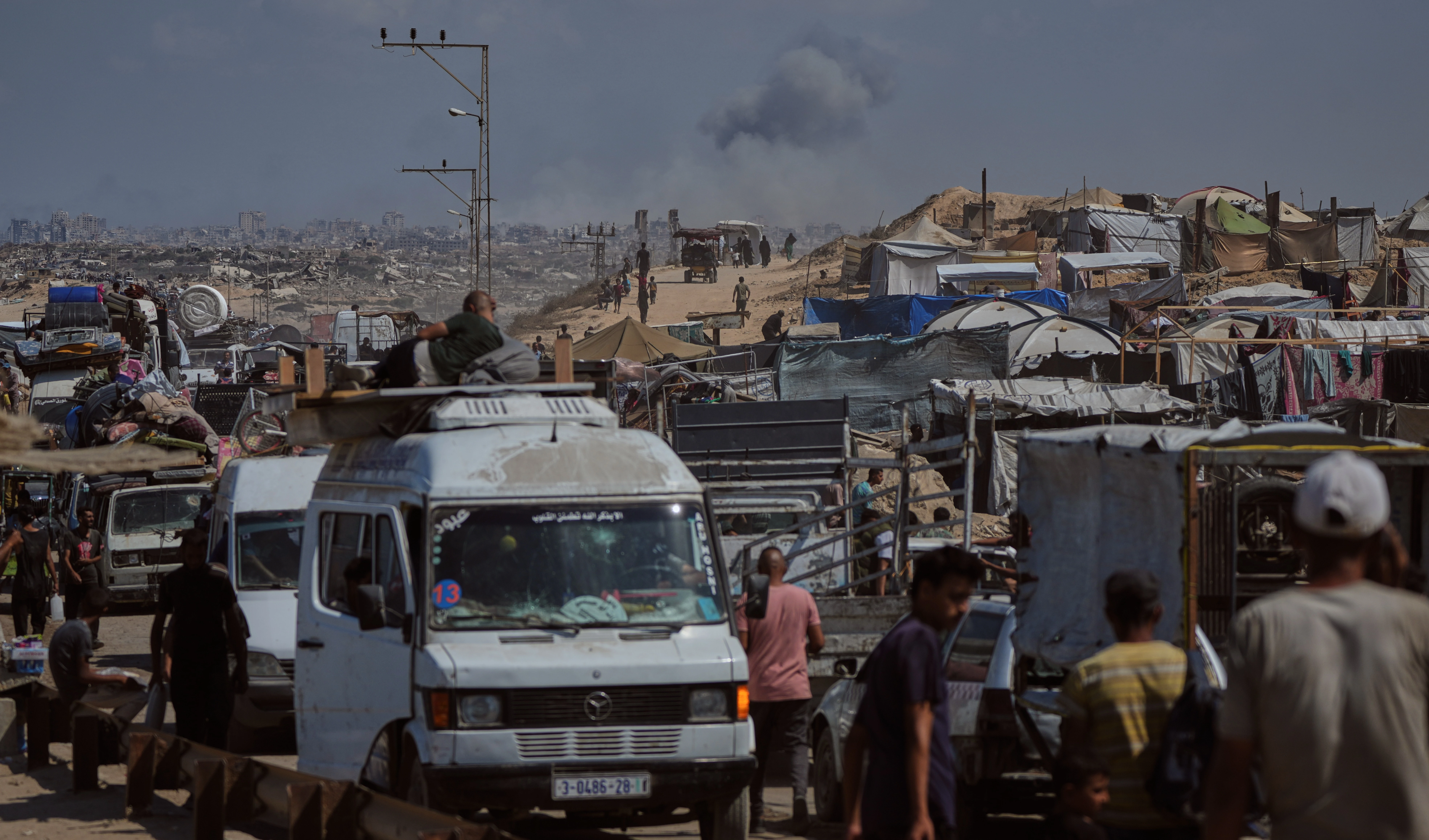Over 1,500 buildings flattened in Gaza since start of ceasefire: BBC
Satellite evidence reviewed by BBC Verify shows that "Israel" has demolished more than 1,500 buildings in Gaza since the October 10 ceasefire.
-

Palestinians walk through the destruction caused by the Israeli air and ground offensive in Sheikh Radwan neighborhood in Gaza City, Tuesday, November 11, 2025. (AP Photo/Jehad Alshrafi)
BBC reported on Tuesday that "Israel" has demolished more than 1,500 buildings in parts of Gaza still under its control, despite the ceasefire that began on October 10. The findings, based on satellite imagery reviewed by BBC Verify, show that entire neighborhoods have been flattened in areas occupied by Israeli forces.
Vast sections were leveled in less than a month, appearing to result from deliberate demolitions rather than combat damage. The actual number of destroyed structures could be higher due to the lack of complete satellite coverage, BBC said.
-

Source: Planet Labs PBC
An Israeli military spokesperson told BBC Verify that the army was acting "in accordance with the ceasefire framework." However, many analysts and rights observers argue that the large-scale demolitions violate the truce brokered by the United States, Egypt, Qatar, and Turkey, showing that Tel Aviv continues to act with impunity despite international guarantees.
The ceasefire was outlined in US President Donald Trump’s 20-point plan for Gaza, which stipulates that "all military operations, including aerial and artillery bombardment, will be suspended." Trump has since repeated that "the war is over."
Despite this, the destruction of civilian infrastructure in Gaza has continued on a massive scale. BBC Verify identified hundreds of newly destroyed buildings behind the so-called Yellow Line, the boundary marking areas held by Israeli forces under the ceasefire deal. The line now effectively divides Gaza into zones under different levels of control.
BBC: Israel Marking Yellow Line Far Deeper Into Gaza Than Agreed, Then Opens Fire and Kills Civilians Beyond It
— Motasem A Dalloul (@AbujomaaGaza) October 24, 2025
New satellite images and IDF footage analysed by BBC Verify show Israeli forces have placed “Yellow Line” boundary markers hundreds of meters deeper inside Gaza than… pic.twitter.com/0F0JNeDnvm
In eastern Khan Younis, homes surrounded by gardens and orchards that had shown no visible damage before the truce have been reduced to rubble. "The Israeli military left nothing to us, they demolished everything," said former resident Lana Khalil, now displaced to al-Mawasi. "Our hearts are broken," she added.
Similar destruction has been recorded near al-Bayuk, east of Rafah, and in parts of Gaza City, including Shujaiyah and the vicinity of the Indonesian Hospital in Jabalia. Verified videos show controlled demolitions and excavators tearing down residential buildings in these same zones.
An Israeli soldier proudly documenting his army unit ethnic cleansing Gaza and patrolling with demolition excavators, flattening what's left of northern Gaza behind the ceasefire's yellow line during the current "ceasefire agreement". pic.twitter.com/8nKjJom1Wk
— Ramy Abdu| رامي عبده (@RamAbdu) November 11, 2025
Ongoing Destruction
Since the ceasefire took effect, at least 242 Palestinians have been killed and more than 620 injured. Overall, more than 69,000 Palestinians have been killed since the beginning of the war in October 2023. The continued toll underscores that, despite formal declarations, the violence has not truly ceased.
Aid access remains heavily restricted. Humanitarian agencies warn that assistance reaching Gaza is still far below the level required to sustain the population. Only a limited number of aid trucks are allowed in each day, and entire northern areas remain cut off. Meanwhile, thousands of displaced families continue to live in overcrowded tents or makeshift shelters with scarce food, medicine, and clean water.
Legal and policy experts interviewed by CNN warn that these actions may breach both the ceasefire terms and international law. Dr. H. A. Hellyer said, "This is definitely a violation of the ceasefire. But [Washington] DC is unwilling to recognise it as such, insisting that the ceasefire has to hold, even when it isn't actually holding."
Adil Haque, a law professor at Rutgers University, stated that during a ceasefire, "it is not plausible that such significant destruction of civilian property has been rendered absolutely necessary by military operations."
Hugh Lovatt, Senior Policy Fellow at the European Council on Foreign Relations, warned that prolonged Israeli control behind the Yellow Line could undermine the peace plan altogether. "Ultimately, the sense that Israel is stalling its withdrawal and seeking to establish new permanent facts on the ground, as it has in the West Bank, will become an increasingly greater threat to the maintenance of the ceasefire," he said.
Read more: 'Two-state solution' dead, Palestine faces existential fight: Al-Taher

 4 Min Read
4 Min Read











